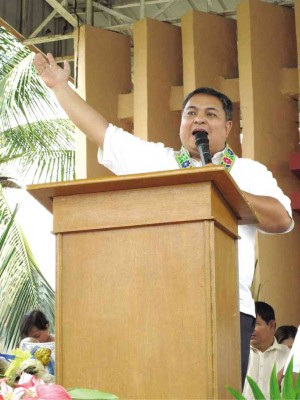
In celebration of the 226th birthday of Francisco Balagtas Baltazar last April 2, the Komisyon sa Wikang Filipino (KWF) led writers, teachers and students on a literary pilgrimage to sites associated with the Prince of Tagalog Poets.
Balagtas established the tradition of Tagalog poetics. He wrote the corrido or awit “Florante at Laura” and the poetic drama “Orosman at Zafira,” which are canonical works and taught in basic and higher education. The well-known Tagalog poetic joust balagtasan is named after him.
The one-day Balagtas pilgrimage, “Bayan, Bayani, at si Balagtas,” was held in Pandacan, Manila; Balagtas, Bulacan; and Orani, Bataan.
National Artist and KWF chair Virgilio Almario said that Balagtas had always been compared to William Shakespeare.
“We’re not even sure if it’s really Shakespeare who wrote the plays; we, on the other hand, have the relatives and the descendants of Balagtas,”
Almario said.
“This is the first chance that the KWF was able to celebrate [Balagtas’ birthday] in three towns that were significant to him when he was alive,” Almario added.
“This literary pilgrimage is a way to celebrate the great poet, Balagtas, who wrote about heroism and motherland and inspired the likes of José Rizal and Andres Bonifacio,” said KWF director-general Roberto Añonuevo said.
“Balagtas’ literature prevailed during the time when literature in Spanish was on its heyday. Our role as modern-day writers and readers is to promote [his works],” said Philippine High School for the Arts Director and poet-performance artist Vim Nadera.
Laurels for poets
Award ceremonies were held in Orani, where Balagtas was born, for the Talaang Ginto: Makata ng Taon and the Dangal ni Balagtas.
Winners in the Talaang Ginto were: Ezzard R. Gilbang (First Prize, or Makata ng Taon) for “Sundayan: Sa Dilim Isinulat ang Liwanag ng Kanilang Pangalan”; Mark Anthony S. Angeles, “Digital Bayani” (Second Prize); and John Enrico C. Torralba, “Isa Munang Patalastas” (Third Prize).
Dangal ni Balagtas, a lifetime achievement award for poetry, was bestowed on well-loved veteran poet Teo Antonio, who’s now based in the United States.
“A country without a poet is like a house without a door,” Sol Antonio, the poet’s wife, said in Tagalog as she delivered her husband’s speech. “Poetry is the soul of a nation, hence, one can see what sort of people live there.”
Floral wreaths were placed on the Balagtas monuments in Pandacan, Balagtas and Orion by officials of the KWF, National Commission for Culture and the Arts (NCCA), National Historical Commission of the Philippines, National Book Development Board, and local government units.
In Pandacan, where Balagtas wrote “Florante at Laura,” NCCA chair and Pandacan-born Felipe de Leon said the beauty of the old Manila district inspired Balagtas in his poetry.
“Celebrations like these are important because we learn more about the great men of the arts,” he said.
Relevant issues
Balagtasan pieces were also presented in each of the three locations in the poet’s honor.
Noteworthy was the balagtasan done in Orani, where a pair of students debated on the pros and cons of digital literacy.
One debater argued technology and the Internet facilitated knowledge and instruction. The other argued children used the computer to play mindless video games. He further argued the Internet degraded language and debased life.
The debate was resolved by the lakandiwa (moderator) who ruled that digital technologies were a boon, not a bane, provided that they were used responsibly.
“Balagtas is always relevant,” poet-teacher Michael Coroza said. “Relevant issues, whether politics, faith, economics, among others—these may all be part of the balagtasan.”